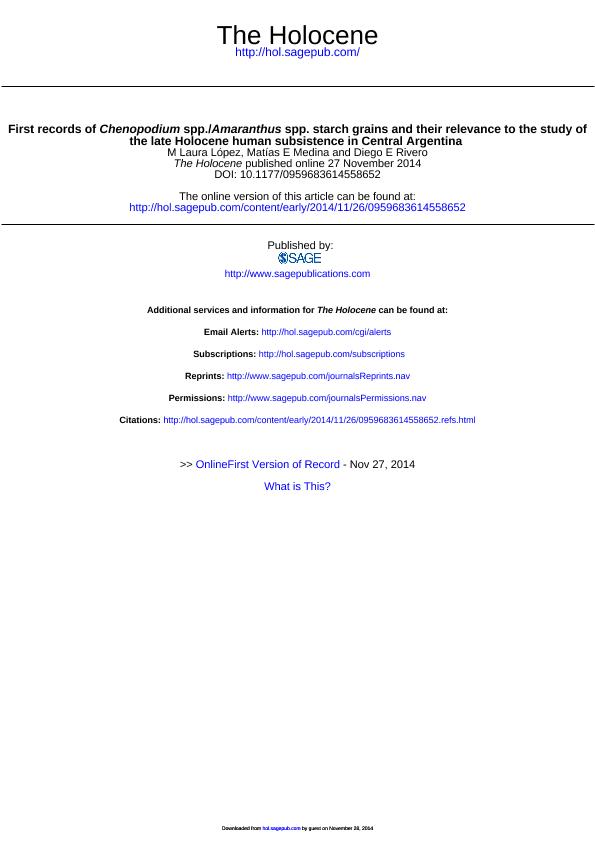Artículo
First records of Chenopodium spp./Amaranthus spp. starch grains and their relevance to the study of the late Holocene human subsistence in Central Argentina
Fecha de publicación:
11/2014
Editorial:
Sage Publications
Revista:
Holocene (Seven Oaks)
ISSN:
0959-6836
Idioma:
Inglés
Tipo de recurso:
Artículo publicado
Clasificación temática:
Resumen
The first Sierras of Córdoba (Argentina) evidences of Chenopodium spp. and/or Amaranthus spp. human consumption were presented in this paper. The identifications were made over micro-botanical remains – starch granules – from grinding tools and pottery from two archaeological sites: Quebrada del Real 1 (c. 3000 BP) and C.Pun.39 (c. 1000–500 BP). Multiproxy data suggest the management of high-nutritional wild plants and the early knowledge of the post-harvest processing technology required to remove the non-edible portion of seed. Thus, the presence of Chenopodium spp. was significant to the study of the subsistence strategies and the small-scale farming spread among the early late Holocene human societies in central Argentina, being especially pertinent as a potential comparison to seek the early phases of food transition in contemporary Andean South America, Mesoamerica, and Eastern North America.
Archivos asociados
Licencia
Identificadores
Colecciones
Articulos(CCT - CORDOBA)
Articulos de CTRO.CIENTIFICO TECNOL.CONICET - CORDOBA
Articulos de CTRO.CIENTIFICO TECNOL.CONICET - CORDOBA
Citación
Lopez, María Laura; Medina, Matias Eduardo; Rivero, Diego Eduardo; First records of Chenopodium spp./Amaranthus spp. starch grains and their relevance to the study of the late Holocene human subsistence in Central Argentina; Sage Publications; Holocene (Seven Oaks); 25; 2; 11-2014; 288-295
Compartir
Altmétricas




